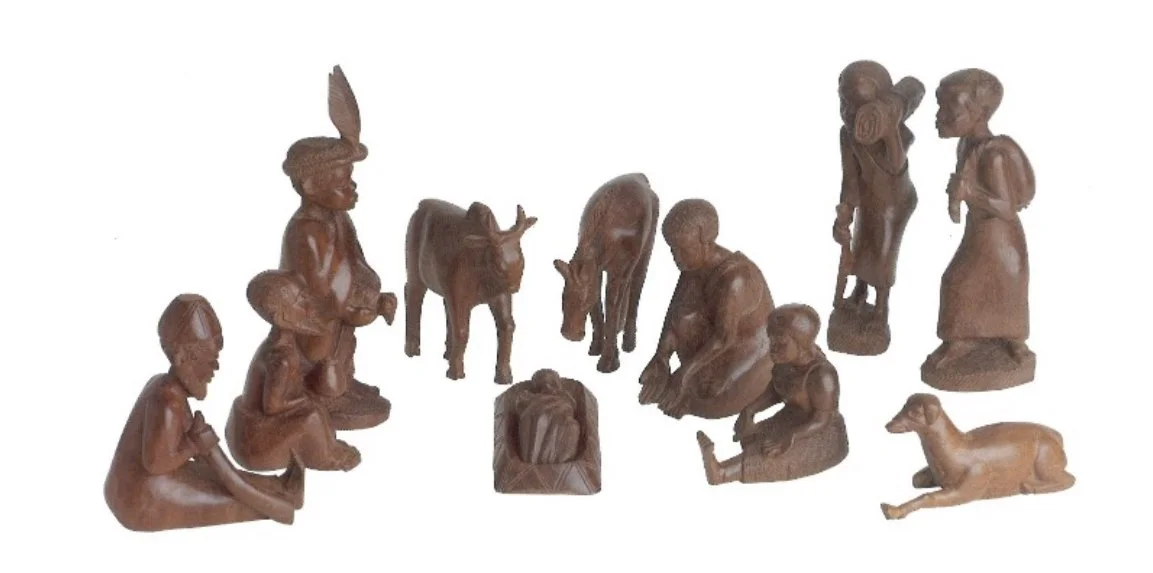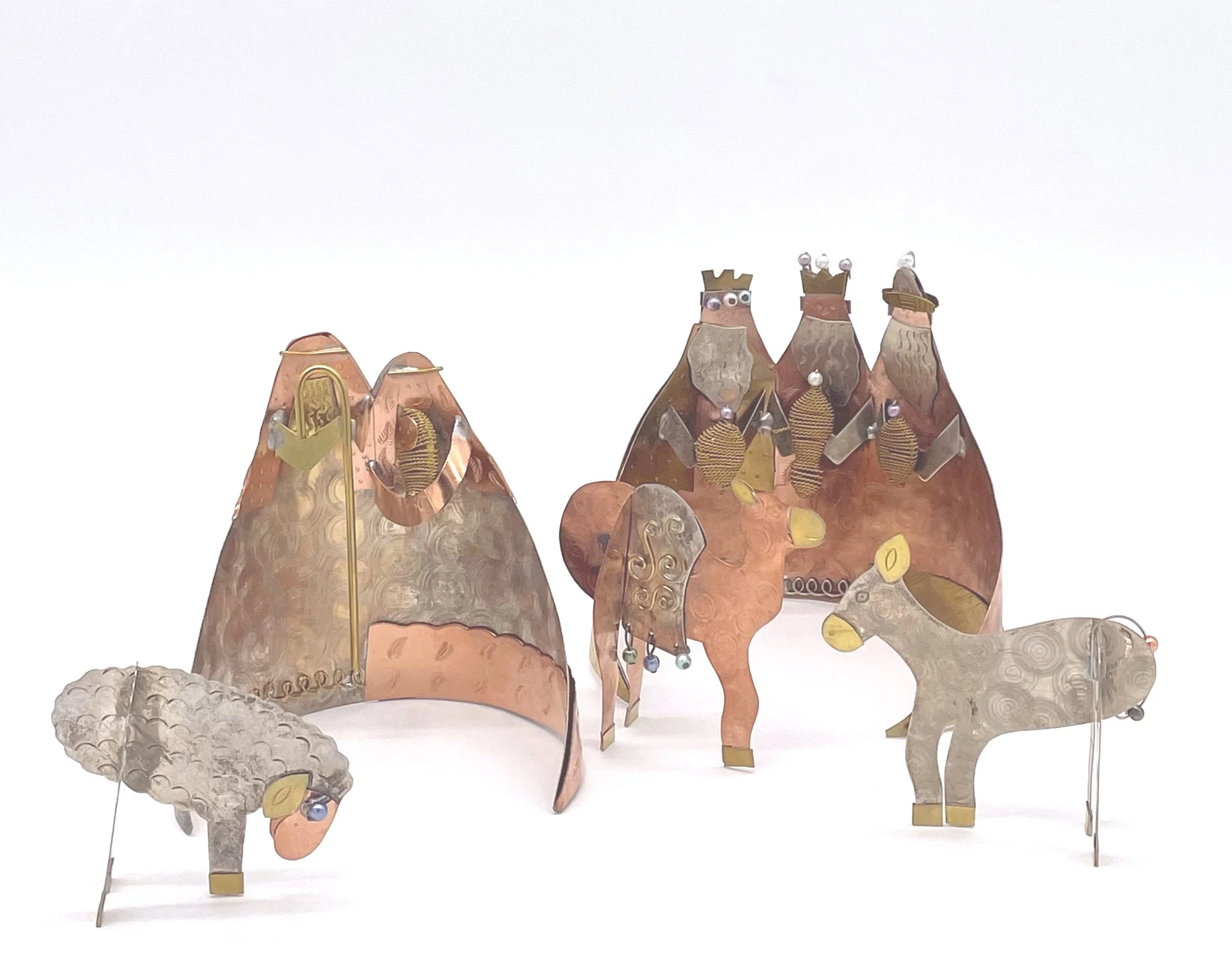Thailand, n.d., Artist Unknown, Nickel, copper, and brass, Loyola University Museum of Art, The James and Emilia Govan Crèches Collection
Gifts from Afar: Five International Creches from the James
and Emilia Govan Crèche Collection, Loyola University
Museum of Art
November 21 – December 24, 2025
This fall, as South Shore Arts launches its first Evergreen Artisan Market, we will exhibit five crèches that exemplify the wealth of creative ingenuity contemporary global artisans bring to this traditional holiday art form. Exuberant color distinguishes the crèche, made of tin, by an anonymous Mexican artist. From India comes a Nativity with figures cast in iron, boldly painted, and bedecked in beads and paper-mache. A Thai artisan simulated the shimmer rich Asian silks, while the Malawian artist, Suwedi Bigula, costumed his kings to represent three indigenous tribes: the Yao, Ngoni, and Chewa. Their gifts of ivory, a chicken and a medicine gourd have great significance in Malawian culture.
The five crèches are on loan from Loyola University Museum of Arts’ James and Emilia Govan Crèche Collection. Comprising over 500 Nativity scenes by artisans representing 100 countries, the collection celebrates the ancient, endearing tradition of the crèche and the creativity with which artisans from across the globe have imbued the story with rich cultural diversity while preserving its universal message of peace and goodwill to all.
As you peruse the many gifts for sale by regional artisans in the Evergreen Artisan Market, we invite you to enjoy the history and living creative tradition of the Christmas crèche.
Sponsored by
Your family tradition of a crèche or Nativity scene, set out upon a mantel, has roots deep in the early centuries of the Christian Church. We tend to forget that there are two different accounts of the Nativity. In Matthew’s Gospel, Magi or Kings travel from the East to present gifts and pay tribute to a child king. However, in Luke’s account, angels lead humble shepherds with their flocks to a child lying in a manger.
In 1223, St. Francis of Assisi took the presentation of Luke’s story a step further by staging a living tableau. His intention was to educate the illiterate and unlettered faithful through an impactful reenactment that resonated directly with their daily existence. Thus was born the tradition of the crèche.
In merging the elements of the two stories, artists gave free range to their imaginations, especially in their depictions of the eastern Wise Men and their entourages. In the Middle Ages, the Magi became three in number because of the number of gifts they presented. Through their brightly colored and splendid dress, inspired by the Persian turbans and Chinese silks traded across the Mediterranean and along the Silk Routes, they symbolized the three known continents of Europe, Asia, and Africa. They were even given names –Gaspar, Balthasar, and Melchior – and rendered as representing three stages in a man’s life: fresh-faced youth, middle age, and bearded old age.
As Christianity, trade, and travel globalized, artisans from around
the world adapted the imagery to their own cultures: replacing
the sheep with indigenous animals, dressing the kings in native costumes, and substituting the traditional gifts of gold, frankincense, and myrrh ith items of great value in their
own societies.



